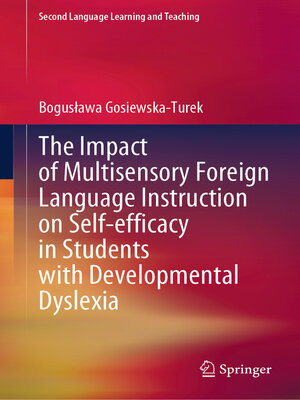The Impact of Multisensory Foreign Language Instruction on Self-efficacy in Students with Developmental Dyslexia
ebook ∣ Second Language Learning and Teaching
By Bogusława Gosiewska-Turek

Sign up to save your library
With an OverDrive account, you can save your favorite libraries for at-a-glance information about availability. Find out more about OverDrive accounts.
Find this title in Libby, the library reading app by OverDrive.



Search for a digital library with this title
Title found at these libraries:
| Library Name | Distance |
|---|---|
| Loading... |
This book investigates the effect of multisensory instruction on self-efficacy among students with developmental dyslexia learning English as a foreign language. The first three chapters of the book delve into theoretical aspects of developmental dyslexia, multisensory instruction, and self-efficacy, providing an overview of existing research in this domain. The second part of the book reports empirical findings obtained from a case study supplemented by quantitative analysis. These findings highlight the advantages of employing multisensory instructional techniques for teaching foreign languages to students with dyslexia. Notably, the application of multisensory instruction not only enhances dyslexic students' foreign language competencies but also positively impacts their self-efficacy. The study underscores the importance of language instruction tailored to the special educational needs of students with dyslexia as well as its potential to foster self-efficacy, an essential factor for success in foreign language learning.







